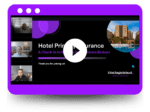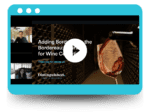When we rang in 2020, did we ever in our wildest dreams (nightmares) consider that social distancing, shelter-in-place, safer-at-home, facemasks, quarantine, and lockdown would be everyday actions we’d take in our personal and work lives? Most of us considered remote work, well, “remote.” Sure, we used Go to Meeting, Google Chat, and other platforms to communicate with clients and our colleagues, but we also got into our cars or on the plane for those important face-to-face presentations, meetings, conferences, and networking. Now what? How are salespeople making it work during the COVID-19 “new normal”?
Zoom, Videoconferencing Take Center Stage
Although salespeople definitely use other video-conferencing tools, Zoom came into the picture like gangbusters once shelter-in-place orders were given and employees went remote. In fact, to give you an idea of videoconferencing’s explosion at the onset of the pandemic, Zoom alone added more than 183,000 enterprise customers with more than 10 employees in March, up 353.7% year over year. Salespeople feel comfortable on video-conferencing apps, making presentations to an individual client or to an entire team. It’s better than the phone and much more intimate, and closer to having a face-to-face conversation that today is not possible. You can easily gauge a person’s reaction and interest in the product or service. According to a report by McKinsey, more than 90% of B2Bs transitioned to virtual sales models on the heels of COVID-19.
Getting Proactive
Salespeople are not waiting for prospects to call or leads to come in. Many have developed a comprehensive approach for customer outreach and lead generation using outbound lead generation (cold calls, email marketing, direct mail) and inbound lead generation (search engine marketing, social media, PPC ads). For example, insurance producers are reaching out to clients and potential customers to discuss their programs and how to better protect them. Cyber insurance is one case in point. With so many people working remotely, cyber threats have increased significantly. Using an omni-channel approach to market Cyber insurance is a top-of-mind issue and can be done using email marketing combined with telemarketing and eventually video conferencing once a prospect is interested.
Content Is King
How many times have you heard this before? But it’s true. Salespeople who are establishing themselves as thought leaders on a particular product or service (including insurance lines) by writing relevant and informative articles and sharing them on LinkedIn and on their corporate site are not only conveying their expertise but they are also making connections and nurturing potential prospects to make the call. Additionally, a content marketing strategy helps establish authority with Google, driving traffic to a corporate website, and ultimately generating leads for salespeople.
Leveraging A New Dynamic
COVID-19 is forcing many changes among businesses and will continue to do so for some time. In some cases, for example, companies may be changing vendors that can’t meet new and evolving demands, allowing others to step to provide the same service or product. This is an opportunity for salespeople to showcase their wares, which may end up being a better fit for a client.
We are living and working in far-from-normal times, but this new environment is providing additional opportunities for the salespeople who are prepared to take them.





